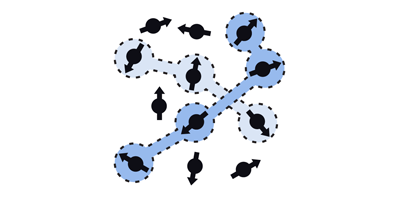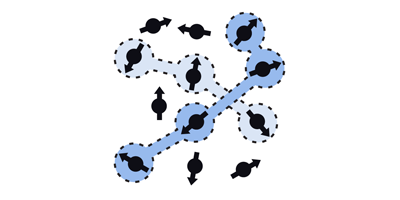Measuring Entanglement Among Many Particles
Entanglement of multiparticle systems is desired for precision interferometry, quantum computing, and fundamental tests of quantum mechanics. However, characterizing the level of entanglement in such large systems is far from straightforward. A group of European physicists has devised a new measure of entanglement based on the collective spin. In Physical Review Letters, they demonstrate their method on an atomic cloud, showing that it contains inseparable clusters of at least entangled atoms.
In a system of only a few particles, physicists can evaluate the entanglement by mapping out all particle correlations. But the number of measurements needed for this so-called quantum tomography grows exponentially with the number of particles. This method is therefore impractical for gauging the entanglement in, for example, a Bose-Einstein condensate (BEC) with thousands of atoms. Researchers have formulated other entanglement measures, but they only apply to specific types of multiparticle entangled states.
Carsten Klempt of the Leibniz University of Hannover, Germany, and his colleagues have developed a novel criterion for characterizing entanglement. Their method involves measuring the sum of all the individual spins in a large ensemble of particles and then evaluating its fluctuations. Compared to previous work, the criterion that Klempt and colleagues use is sensitive to a wider range of entangled states. The team created one particular state, a so-called Dicke state, with atoms from a BEC and measured the total spin using a strong magnetic field gradient. From their entanglement measure, they estimate that the largest grouping of entangled particles contains atoms or more, which presents the largest number measured for Dicke states so far. – Michael Schirber





